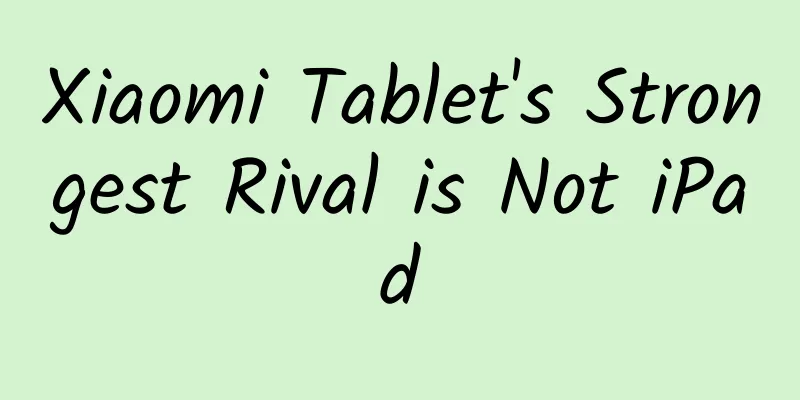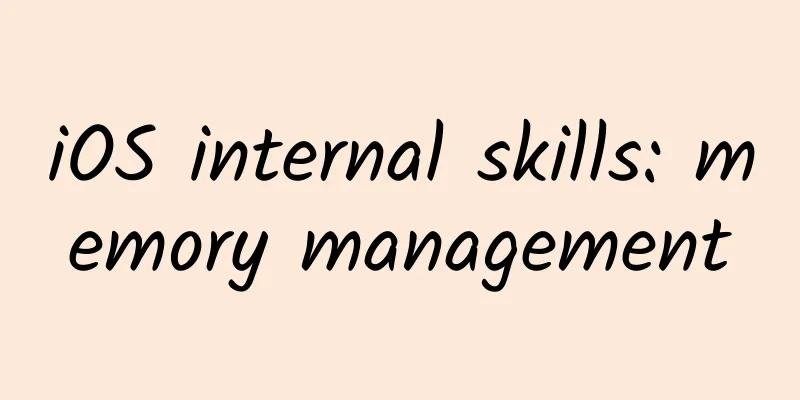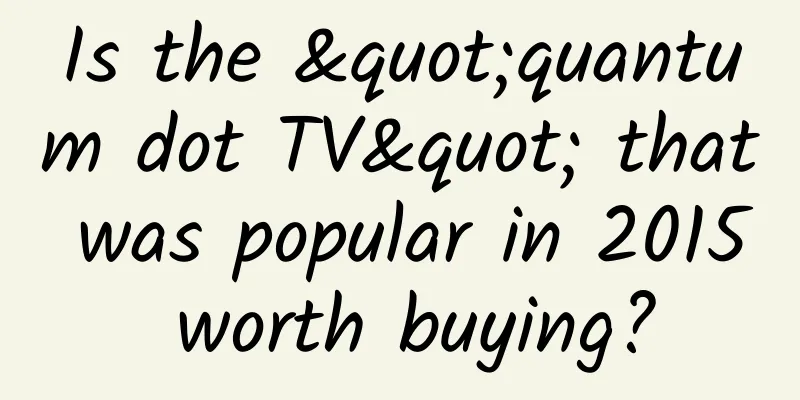Xiaomi Tablet's Strongest Rival is Not iPad

|
On May 15, Xiaomi held a new product launch conference and the Xiaomi Tablet was released. 1. Matching Apple, teasing Samsung, and raising the price 1. Xiaomi Tablet is compared with Apple in every aspect From the appearance, Xiaomi Tablet seems to be a combination of iPad Mini with retina screen and iPhone 5C. For example, the back shell of Xiaomi Tablet uses the materials and processes used by iPhone 5C, and it also launches a multi-color version; the screen size and resolution are consistent with iPad Mini. Lei Jun also emphasized that the performance of Xiaomi Tablet exceeds that of iPad Mini, and the graphics processing performance of the NVIDIA Tegra K1 quad-core processor is 2.3 times that of Apple A7. The price of Xiaomi Tablet has a clear advantage over Apple, such as 16G version Xiaomi 1499 yuan, Apple 2888 yuan, 64G version Xiaomi 1699 yuan, Apple 4888 yuan. Of course, Xiaomi will not talk about some single indicators that are lower than Apple. For example, Xiaomi's shell is plastic, the cost is much lower than Apple; the plastic shell is used to reduce the overall weight, but it is still heavier than Apple. And so on. Choosing to align with Apple, which is in the first place, can, on the one hand, raise its own value and make users have expectations. On the other hand, it provides a gimmick for later marketing and lays a good foundation. 2. What will Samsung think of despising Android tablets? Lei Jun said at the press conference that it is really difficult to make Android tablets. Either they cannot be sold, or no one uses them after they are sold. He also gave data: in Q1 2014, iPad accounted for only 32.5% of global tablet sales, but the usage rate was four times that of other tablets. There is nothing wrong with the data, but the highly provocative qualitative view hurt the hearts of Android tablets, especially Samsung. Let's look at a set of data from Gartner: In 2012, Apple's tablet market share was as high as 53%, and Samsung's share was only 7%. In 2013, Apple's tablet market share dropped to 36%, and Samsung's share reached 19%. In Q1 2014, Apple's tablet market share continued to decline to 32.5%, and Samsung's share further increased to 22.3%. It can be seen that iPad sales are declining, while the share of Android tablets led by Samsung is rising. If they can't be sold, it should refer to some unbranded or miscellaneous tablets. The view that no one uses them after they are sold is also worth discussing. The usage rate of iPad is higher than that of Android tablets, which is related to the user group. The iPad itself is relatively expensive, and the corresponding user group has strong consumption power. Users who can spend a high price to buy hardware will naturally use it more frequently. There are many brands of Android tablets, which are uneven, and the user groups are scattered. There are both high-value and low-usage tablets. Based on the overall situation of Android tablets, Xiaomi can only exceed the average level. Second, let's not talk about Apple and Samsung, the real rival of Xiaomi tablets is Lenovo. Just like in the mobile phone market, Apple and Samsung are used to look up to in terms of sales share and product prices, at least in recent years. In the tablet market, the two occupy more than half of the market share. Therefore, let's not talk about Apple and Samsung. According to the idea of challenging giants, the first rival Xiaomi encounters should be Lenovo. There are two reasons: 1. Lenovo has the largest tablet sales in China and the highest brand attention. According to IDC data, Lenovo tablet sales in Q1 2014 were 2.1 million units, with a market share of 4.1%, ranking fourth. The top brands are Apple (32.5%), Samsung (22.3%), and Asus (5.0%). According to ZDC data, in the first quarter of 2014, Apple ranked first with 27.9%, Samsung ranked second with 16.6%, and Lenovo ranked third with 9.7%. 2. The average price of Lenovo tablets is close to that of Xiaomi tablets . According to ZDC data, in the first quarter of 2014, the average price of mainstream tablet brands is close to that of Xiaomi tablets. Lenovo is priced at 1,694 yuan, and Asus is priced at 1,437 yuan. The 16G version of Xiaomi is priced at 1,499 yuan, which is actually a foil to highlight the 1,699 yuan of the 64G version. Therefore, the volume of the 16G version will not be large. The mainstream price of Xiaomi tablets is 1,699 yuan, which is almost the same as Lenovo. After all, Xiaomi tablets have just started, and it will take some time to catch up with Lenovo. So what changes will Xiaomi's disruption bring to Lenovo? Is it possible for Xiaomi to catch up with Lenovo? The author tries to analyze it. Xiaomi's ecological approach is the biggest threat to Lenovo. Xiaomi dares to say "make the most user-friendly Android tablet" because it uses "hardware + system + application" to build a semi-closed ecological environment. Compared with Apple's ecological system, it is more open, giving users more choices; compared with Android tablets, it has the closed characteristics of Apple, with outstanding convenience and security. This approach has achieved certain success in the mobile phone field. Lenovo also has Le Store to provide convenience for users. However, at the operating system level, it is slightly inferior, and Le OS has almost disappeared from people's sight. The low-price disruption of Xiaomi products will hit Lenovo's soft spot. Xiaomi takes the route of fewer but better, with only 2 models, positioned in the mid-range. Lenovo takes the strategy of more and more, with 34 tablets on sale, covering high, medium and low prices. Low-end ones, such as Xiaoxiao Qian 2, are priced at 699 yuan; high-end ones, such as YOGA Platinum Silver Flagship Edition, are priced at 3299 yuan. In the main price segment, Xiaomi will definitely hit hard. Lenovo's main tablet is the YOGA series. Less than a month after its launch in November 2013, it broke the sales record of one million and won many industry heavyweight awards such as the "Edison Award Electronic Product Gold Award". Its price ranges from 1,699 to 3,299 yuan. Xiaomi staggered the overall price of this series, hitting Lenovo's weak spot. In addition, Xiaomi's low price disruption may prompt Lenovo to launch a boutique product strategy. Although Lenovo has many models, the sales of each model are not high. This situation is the same as Lenovo's previous mobile phones. Faced with the competition from Internet mobile phones, mobile phone manufacturers such as Lenovo and ZTE all adopted a boutique strategy in 2013. In the tablet market, this scene may be repeated after Xiaomi enters. A marketing war of words is inevitable. One of the key points of Xiaomi's victory is word of mouth. Word of mouth comes from user evaluation after use, and word of mouth; it also starts from Xiaomi marketing and uses media and water army methods to instill it into users. Among traditional hardware manufacturers, Lenovo's online marketing level is gradually improving. For example, we media were invited to "fire" at Lenovo mobile phones, major websites compared products (such as Lenovo Golden Bullfighter S8 and Xiaomi Redmi Note), and there were strong support and verbal battles in the comments behind various related articles. Before and after the Xiaomi tablet launch conference, news about Lenovo tablets gradually increased. As the marketing of Xiaomi tablets unfolds, the pace of marketing verbal battles is also approaching. Although Xiaomi is good at e-commerce channels, it still has shortcomings in large-scale sales. The sales of e-commerce websites must be based on traffic, and there is a cost to attract traffic. The large-scale and continuous formation of traffic requires vigorous marketing, such as Tmall's "Double Eleven". Xiaomi's various products are almost sold on the Xiaomi official website. Although there is continuous traffic on QQ space, Weibo, etc., it is still insufficient compared to large-scale sales. A typical example is that the sales of Redmi on Xiaomi's official website are less than half of its total sales. If Xiaomi tablets want to sell on a large scale, it is not enough to rely on Xiaomi's official website alone, and it needs to expand offline agency channels. In this regard, Lenovo has formed a deep accumulation in the PC era and the mobile phone era, and has obvious advantages. In general, in the tablet market, Lenovo covers the "surface" while Xiaomi focuses on the "points"; Lenovo has a solid foundation while Xiaomi has more momentum. In the short term, Xiaomi tablets are unlikely to become popular, but a heavy blow will hurt Lenovo for a while. In the long term, it depends on Xiaomi's overall ecological gameplay and layout strategy. After all, tablets are just one piece, so wait and see. As a winner of Toutiao's Qingyun Plan and Baijiahao's Bai+ Plan, the 2019 Baidu Digital Author of the Year, the Baijiahao's Most Popular Author in the Technology Field, the 2019 Sogou Technology and Culture Author, and the 2021 Baijiahao Quarterly Influential Creator, he has won many awards, including the 2013 Sohu Best Industry Media Person, the 2015 China New Media Entrepreneurship Competition Beijing Third Place, the 2015 Guangmang Experience Award, the 2015 China New Media Entrepreneurship Competition Finals Third Place, and the 2018 Baidu Dynamic Annual Powerful Celebrity. |
<<: iOS 8 must kick out these six guys
>>: Why OLED technology is suitable for flat-panel TVs
Recommend
How to create a super user? Let’s clarify 3 points first!
Creating super users is not just a slogan, but a ...
What kind of “beast” is the green-faced beast, and what kind of “ghost” is the red-haired ghost?
This is the 5229th article of Da Yi Xiao Hu Each ...
Exclusive interview: An article that helps you truly understand DSP advertising
Although DSP and information flow have been aroun...
Food prices are going to rise? Wait, don’t rush to grab them!
This article was first published by Hunzhi (WeCha...
B Station Brand Promotion Guide
Are you thinking about where the future increment...
Blizzard, temperature drop! Four warnings issued simultaneously! Be careful when traveling in these areas →
Affected by the cold wave March 2 Large-scale rai...
Chats can be encrypted! Tencent launches WeChat message encryption app "MiXin"
Recently, Tencent launched a mini program called ...
The key to breakthrough for marketing professionals in 2020!
The domestic marketing industry faces some major ...
China Passenger Car Association: China's auto dealer inventory warning index is 58.2% in December 2022
On December 31, 2022, the latest issue of "C...
How to operate and promote Weibo? 5 tips for Weibo operation and promotion!
Weibo's business model is already quite matur...
The free lunch is over: Tesla Superchargers start charging
Tesla Motors announced on Monday that it will end ...
Popular Science | When hot water and cold water are put into the refrigerator together, why does the hot water freeze first?
If a cup of hot water and a cup of cold water are...
What are the benefits of Douyin Blue V enterprise certification? How to apply for Douyin Blue V certification?
When most people operate a Douyin account, they c...









![Chen Naiba's Douyin Book List Performance Course, the core skills and operating standards for quickly starting an account [Video Course]](/upload/images/67cc29ea1fbef.webp)